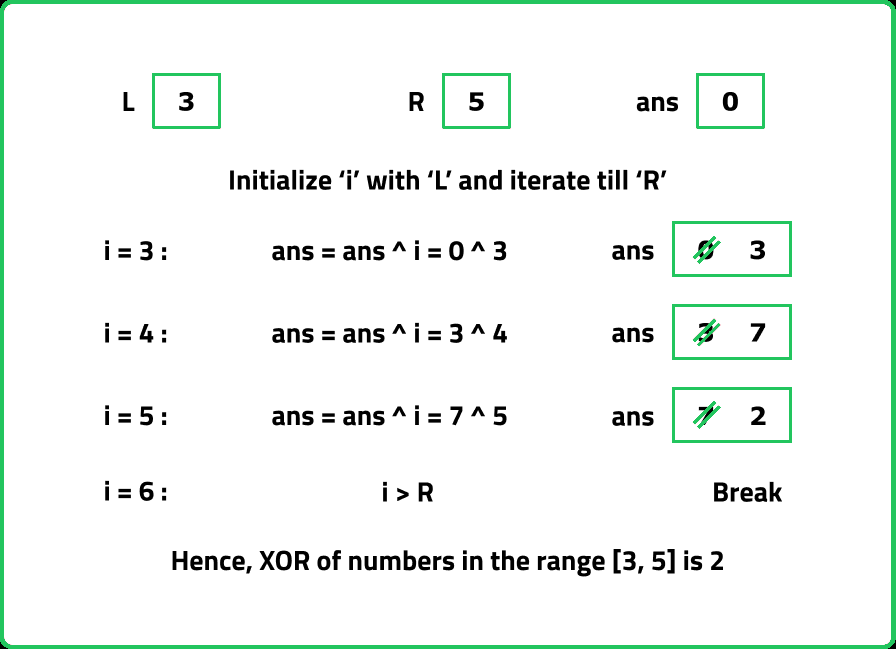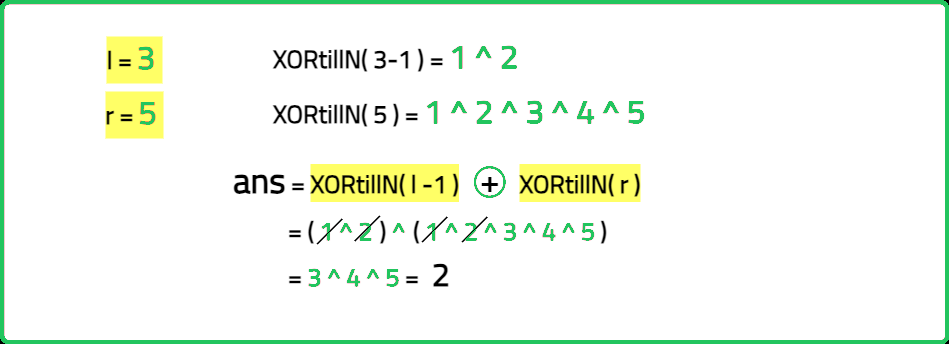XOR of numbers in a given range
Bit Manipulation
Problems
Medium
- This problem underlines the XOR bitwise operation widely used in cryptography and communication protocols
- A real-world application of XOR is the network checksum algorithms in TCP/IP to check the integrity of data
- XOR is also used in error detection and correction codes used in data storage and transmission
- This is particularly useful as XOR operation produces a unique output for a unique input, enabling quick detection and correction of errors
Given two integers L and R. Find the XOR of the elements in the range [L , R].
Examples:
Input : L = 3 , R = 5
Output : 2
Explanation : answer = (3 ^ 4 ^ 5) = 2.
Input : L = 1, R = 3
Output : 0
Explanation : answer = (1 ^ 2 ^ 3) = 2.
Input : L = 4, R = 10
Constraints
- 1 <= L <= R <= 109
Hints
- The XOR of numbers from L to R can be computed using the cumulative XOR from 0 to R and 0 to L−1. This is because XOR(L to R)=XOR(0 to R)⊕XOR(0 to L−1).
- Compute XOR(L to R) as f(R)⊕f(L-1), where f(N) is the XOR of numbers from 0 to N based on the modulo 4 pattern.
Company Tags
Medtronic
GE Healthcare
McKinsey & Company
IBM
Oracle
Flipkart
HashiCorp
DoorDash
Philips Healthcare
Square
KPMG
Intel
Bain & Company
Electronic Arts
Broadcom
Optum
Twilio
Byju's
MongoDB
Cloudflare
Nutanix
Salesforce
Instacart
Lyft
Stripe
Google
Microsoft
Amazon
Meta
Apple
Netflix
Adobe

